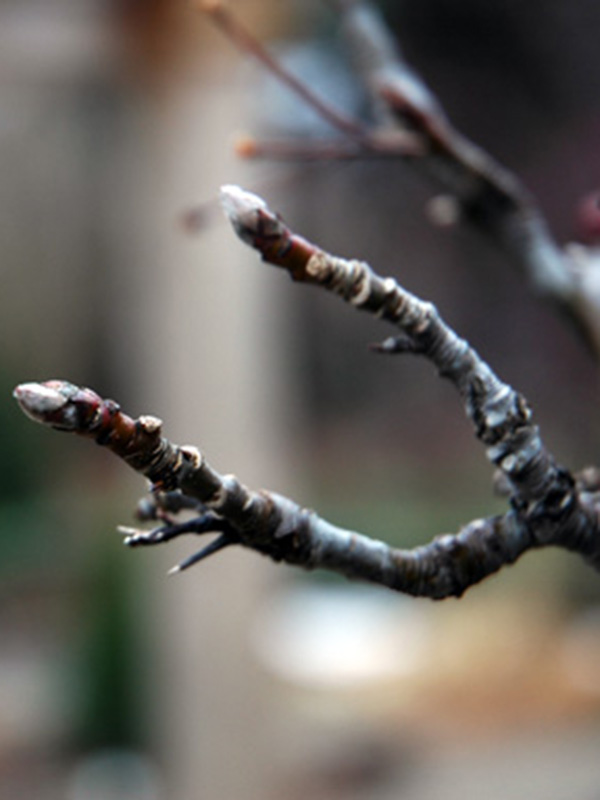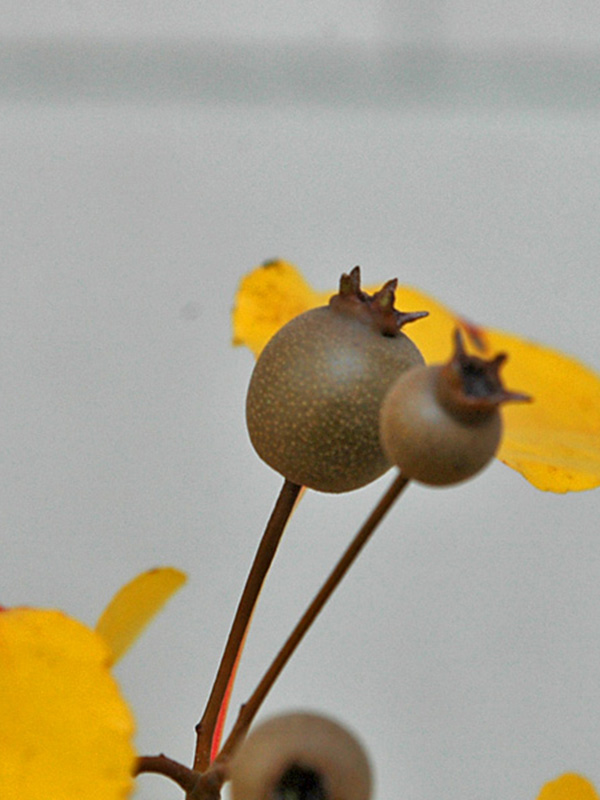Pyrus calleryana 'Glen's Form ' (Chanticleer Pear)
Michael's Opinion
One of the most spectacular and one of the most popular landscape tree’s in the past 5 years, especially of the Pyrus genus. This cultivar has many positive attributes and only a few downfalls. More suited for smaller gardens and confined spaces with it’s more narrow upright columnar shape. A Beautiful ornamental shade tree with outstanding early-spring and autumn foliage colours. Produces large amounts of white flowers that cover the tree and large amounts of fruit that attract all sorts of wildlife. It is drought tolerant, and pollution tolerant, and can be planted in most soil conditions, yet prefers well drained soils. The one downfall would be its weak crotches that could break due to heavy ice or snow, however it is still stronger than ‘Bradford’. Other than that I highly recommend P.calleryana 'Glensform'.
Botanical Information
| Family | Rosaceae |
| Genus | Pyrus |
| Species | calleryana |
| Cultivar | 'Glen's Form ' |
| Registered Name | Chanticleer® |
| Patent Number | PP2,489 |
| Category | Woody |
| Type | Tree (deciduous) |
| Origin | Selected by Scanlon Nursery in 1959, it has a United States Plant Patent PP2,489 issued March 23, 1965. |
| Ethnobotanical Uses Disclaimer | The fruit is inedible. |
| Pronunciation |
Details
| USDA Hardiness Zone | 5-8(9) |
| USDA Hardiness Ref. | |
| Canadian Hardiness Zone | 6b |
| Canada Hardiness Ref. | |
| RHS Hardiness Zone | H7 |
| RHS Hardiness Ref. | |
| Temperature (°C) | -34 |
| Temperature (°F) | -30 |
| Height | 10 m |
| Spread | 5 m |
| Growth | Medium |
| Flowering Period | April, May, June |
Description and Growing Information
| General Description | A tall, narrow upright-pyramidal tree, narrower than ‘Bradford’ and better choice for lateral space. Ornamental tree that produces white flowers in spring, small inedible fruit, and beautiful glossy foliage with great autumn colour. |
| ID Characteristic | A small to medium size deciduous tree, with alternate leaf pattern and upright branching. One of the first trees to bloom, making it outstanding in its own class. Prone to weak crotch breakage however tougher than the other cultivars. Small pear-like fruit, hidden under green, shiny summer leaves. Foliage turns yellow, orange and bright red in autumn. Petiole roughly the length of the leaf, usually red while yellow underneath. Gritty bark. |
| Shape | A small-medium, upright–pyramidal tree. |
| Landscape | An excellent, low-maintenance ornamental tree that has become very invasive in parts of the United States. |
| Propagation | Grafting onto a rootstock of same species during winter. |
| Cultivation | Generally pruned in winter or early spring; remove the lowest branches to create head room. It is adaptable to pollution and poor soils and tolerant of most urban conditions. It can be transplanted at any size. best planted in winter. It does best in full sun and needs regular watering at first but over time it becomes fairly drought tolerant. |
| Pests | Fire blight, (bacterial disease that will sometimes kills entire limbs, very difficult to control), is common among the Pear trees, however 'Glen's Form' shows good resistance to fire blight. |
| Notable Specimens | Weldon Library, University of Western Ontario. The Gardens of Fanshawe College, London, Ontario. Royal Botanical Gardens, Burlington, Ontario, Canada. |
| Habitat | Horticultural origin. |
| Bark/Stem Description | The bark is a lustrous brown at youth, but as it matures the central trunk has a gritty feel and look. The multiple leaders remain smooth and sandy, green-brown in colour, producing large lenticels with maturity. |
| Flower/Leaf Bud Description | Large lateral and terminal ovate buds, 5-15 mm. Tomentose, light grey. |
| Leaf Description | Simple, alternating arrangement, ovate to broad-ovate. The 3.5-7.5 cm leaves stay on late in autumn. Acuminate to acute, glossy leathery leaves are dark green in summer turning a beautiful yellow-orange and eventually a deep red in autumn. |
| Flower Description | A beautiful flowering tree in full bloom, the tree is covered with approximately 2.5cm white flowers, 5 petals, with purple anthers. The flowers set up in clusters of a dozen usually measuring 7.5 cm across, flowering on new growth. |
| Fruit Description | Like the other cultivars of P.calleryana, Chanticleer ® ‘Glens Form’ produces small inedible pears, maximum size reaching 1 cm. These miniature rounded pears are brown with hundreds of tiny beige dots. Usually displayed in late summer and often eaten |
| Colour Description | In summer, the foliage is a glossy dark green on top, light green on the underside, changing to a beautiful glossy yellow-orange to deep scarlet in autumn. |
| Texture Description | Medium in texture. Leaves have a thin, leathery glossy feel. The bark texture is smooth on young trees. When mature, the trunk becomes rough yet the stems and branches stay smooth. |
Photographs
Pyrus calleryana 'Chanticleer Glens Form', form
Pyrus calleryana 'Chanticleer Glens Form', leaf

Pyrus calleryana 'Chanticleer Glens Form', flower

Pyrus calleryana 'Chanticleer Glens Form', fruit
Pyrus calleryana 'Chanticleer Glens Form', summer, The Gardens of Fanshawe College, London, Ontario.
Pyrus calleryana 'Chanticleer Glens Form', fall, Gardens of Fanshawe College, London, Ontario.